7.2 Photosynthesis: Overview
Trapping sunlight's energy in organic molecules
Christelle Sabatier
Learning Objectives
By the end of this section, you will be able to do the following:
- Explain the significance of photosynthesis to other living organisms.
- Describe the main structures involved in photosynthesis.
- Identify the substrates and products of photosynthesis.
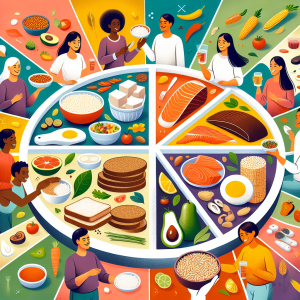
Photosynthesis is essential to all life on earth; both plants and animals depend on it. It is the only biological process that can capture energy that originates from sunlight and converts it into chemical compounds (carbohydrates) that most organism uses to power its metabolism. It is also a source of oxygen necessary for many living organisms. In brief, the energy of sunlight is “captured” to energize electrons, whose energy is then stored in the covalent bonds of sugar molecules. How long lasting and stable are those covalent bonds? The energy extracted today by the burning of coal and petroleum products represents sunlight energy captured and stored by photosynthesis 350 to 200 million years ago during the Carboniferous Period.
Plants, algae, and a group of bacteria called cyanobacteria are the only organisms capable of performing photosynthesis (Figure 7.2.2). Because they use light to manufacture their own food, they are called photoautotrophs (literally, “self-feeders using light”). Other organisms, such as animals, fungi, and most other bacteria, are termed heterotrophs (“other feeders”), because they must rely on the sugars produced by photosynthetic organisms for their energy needs. A third very interesting group of bacteria synthesize sugars, not by using sunlight’s energy, but by extracting energy from inorganic chemical compounds. For this reason, they are referred to as chemoautotrophs. Autotrophs is a more general term that applies to any organism that can manufacture their own food using inorganic materials.
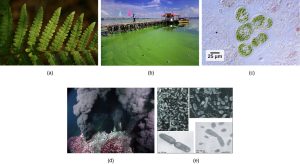
The importance of photosynthesis is not just that it can capture sunlight’s energy. After all, a lizard sunning itself on a cold day can use the sun’s energy to warm up in a process called behavioral thermoregulation. In contrast, photosynthesis is vital because it evolved as a way to store the energy from solar radiation (the “photo-” part) to energy in the carbon-carbon bonds of carbohydrate molecules (the “-synthesis” part). Those carbohydrates are the energy source that both autotrophs and heterotrophs use to power the synthesis of ATP via respiration. Therefore, photosynthesis powers 99% of Earth’s ecosystems. When a top predator, such as a wolf, preys on a deer (Figure 7.2.3), the wolf is at the end of an energy path that went from nuclear reactions on the surface of the sun, to visible light, to photosynthesis, to vegetation, to deer, and finally to the wolf.
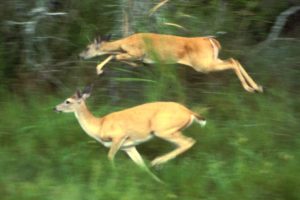
Main Structures and Summary of Photosynthesis
Photosynthesis is a multi-step process that requires specific wavelengths of visible sunlight, carbon dioxide (which is low in energy), and water as substrates (Figure 7.2.4). After the process is complete, it releases oxygen and produces glyceraldehyde-3-phosphate (G3P), as well as simple carbohydrate molecules (high in energy) that can then be converted into glucose, sucrose, or any of dozens of other sugar molecules. These sugar molecules contain energy and the carbon that all living things need to survive.
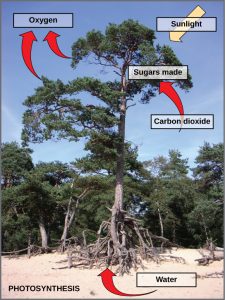

Basic Photosynthetic Structures
In plants, photosynthesis generally takes place in leaves, which consist of several layers of cells. The process of photosynthesis occurs primarily in a middle layer called the mesophyll. The gas exchange of carbon dioxide and oxygen occurs through small, regulated openings called stomata (singular: stoma), which play roles in the regulation of gas exchange and water balance. The stomata are typically located on the underside of the leaf, which helps to minimize water loss due to high temperatures on the upper surface of the leaf. Each stoma is flanked by guard cells that regulate the opening and closing of the stomata by swelling or shrinking in response to osmotic changes.
In all autotrophic eukaryotes, photosynthesis takes place inside an organelle called a chloroplast. For plants, chloroplast-containing cells exist mostly in the mesophyll. Chloroplasts have a double membrane envelope (composed of an outer membrane and an inner membrane), and are ancestrally derived from ancient free-living cyanobacteria. Within the chloroplast are stacked, disc-shaped structures called thylakoids. Embedded in the thylakoid membrane is chlorophyll, a pigment (molecule that absorbs light) responsible for capturing light energy, and numerous proteins that make up the electron transport chain. The thylakoid membrane encloses an internal space called the thylakoid lumen. As shown in Figure 7.2.6, a stack of thylakoids is called a granum, and the liquid-filled space surrounding the granum is called stroma or “bed” (not to be confused with stoma or “mouth,” an opening on the leaf epidermis).
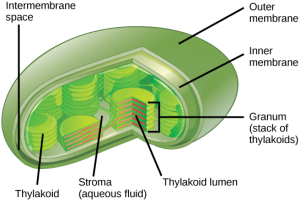
The Two Parts of Photosynthesis
Photosynthesis takes place in two sequential stages: the light-dependent reactions and the light-independent reactions. In the light-dependent reactions, energy from sunlight is absorbed by chlorophyll and that energy is converted into stored chemical energy. In the light-independent reactions, the chemical energy harvested during the light-dependent reactions drives the assembly of sugar molecules from carbon dioxide. Therefore, although the light-independent reactions do not use light as a reactant, they require the products of the light-dependent reactions to function. In addition, however, several enzymes of the light-independent reactions are activated by light.
The light-dependent reactions utilize certain molecules to temporarily store the energy: These are referred to as energy carriers. The energy carriers (ATP and NADPH) that move energy from light-dependent reactions to light-independent reactions can be thought of as “full” because they are rich in energy. After the energy is released, the “empty” energy carriers (ADP and NADP+) return to the light-dependent reaction to obtain more energy. Figure 7.2.7 illustrates the components inside the chloroplast where the light-dependent and light-independent reactions take place.

Practice Questions
Glossary
autotrophs
any organism that can manufacture their own food using inorganic materials
chloroplast
membrane-bound organelle that contains all of the machinery to carry out photosynthesis
heterotrophs
organism that consumes organic substances or other organisms for food
light-dependent reactions
energy from sunlight is absorbed by chlorophyll and that energy is converted into stored chemical energy
light-independent reactions
chemical energy harvested during the light-dependent reactions drives the assembly of sugar molecules from carbon dioxide
NADPH
electron carrier that moves electrons between the light-dependent reactions to the light-independent reactions.
thylakoid
membrane bound structure inside the chloroplast where the light-dependent reactions take place
stroma
liquid filled space within the chloroplast where the Calvin Cycle takes place
Figure Descriptions
Figure 7.2.1. A bright, stylized scene centers on a large circular “food wheel” divided into wedges filled with foods—bowls of rice and oats, loaves and slices of bread, tofu, eggs, salmon and other fish, meats, beans and nuts, and vibrant fruits and vegetables such as citrus, berries, avocado, greens, corn, and carrots. Around the wheel, people of varied ages and appearances shop, cook, and eat, holding bowls, cups, or plates; smaller panels show additional produce and pantry staples. The composition evokes a grocery store stocked from around the world and visually reinforces the caption’s point: whether plant foods or animal products, the energy in what we eat traces back to plants capturing sunlight through photosynthesis and, for animal foods, that energy passing along food chains. [Return to Figure 7.2.1]
Figure 7.2.2. The composite image illustrates autotrophic life in different environments. Panel (a) shows bright green, segmented plant leaves; panel (b) depicts a pier over water covered by a vivid green algal bloom; panel (c) is a micrograph of clustered cyanobacteria, small green cells with a 25 µm scale bar. These three panels represent photoautotrophs that make organic compounds via photosynthesis using sunlight. Panel (d) shifts to a dark deep-sea hydrothermal vent scene where hot fluid billows upward amid white tubeworms and other vent fauna; panel (e) presents images of thermophilic bacteria associated with the vents. These latter organisms are chemoautotrophs, capturing energy from inorganic chemicals to build organic molecules, supporting a diverse vent ecosystem of tubeworms, crustaceans, and octopuses. [Return to Figure 7.2.2]
Figure 7.2.3. Picture of two deer running and jumping as though they are running away from a predator. [Return to Figure 7.2.3]
Figure 7.2.4. A tall pine stands on sandy ground with exposed roots. Overlaid graphics use arrows and labels to depict photosynthesis: a yellow arrow labeled Sunlight points toward the crown; a red arrow labeled Carbon dioxide points into the foliage; another label, Sugars made, sits near the canopy; two red curved arrows labeled Oxygen point outward from the leaves; and at the base a red arrow labeled Water points up toward the roots. At the bottom of the image is the label Photosynthesis. The combined labels show that plants use sunlight, carbon dioxide, and water to make energy-storing carbohydrates and release oxygen as a byproduct. [Return to Figure 7.2.4]
Figure 7.2.5. A boxed chart titled “Photosynthesis Equation” shows the reaction in words and symbols. Across the top row: Carbon dioxide + Water followed by a large arrow labeled SUNLIGHT pointing to Sugar + Oxygen. A second row gives the balanced chemical formula: 6CO₂ + 6H₂O → C₆H₁₂O₆ + 6O₂. The layout summarizes that sunlight powers the conversion of carbon dioxide and water into carbohydrate and oxygen, while the caption notes the true process occurs in many steps with intermediates (e.g., two three-carbon G3Ps forming glucose). [Return to Figure 7.2.5]
Figure 7.2.6. A green, bean-shaped chloroplast is drawn in cutaway view. Two smooth envelopes (the outer membrane and inner membrane) surround a light-green interior (stroma). The outer membrane label reads “Outer membrane”; the smooth, light-green outer envelope forming the chloroplast’s boundary. The inner membrane label reads “Inner membrane”; a second, slightly lighter rim just inside the outer membrane that lines the organelle’s interior. The stroma label reads “Stroma (aqueous fluid)”; the light-green fluid matrix filling the chloroplast and surrounding the stacks. The granum label reads “Granum (stack of thylakoids)”; a tall column of flat, coin-like discs piled one atop another (one stack labeled “Thylakoid lumen” is highlighted by a zoomed callout where photosynthesis occurs). The thylakoid label reads “Thylakoid”; a single flat disc within a granum, emphasized in the inset to show one unit of the stack. [Return to Figure 7.2.6]
Figure 7.2.7. A cutaway chloroplast shows an outer and inner membrane surrounding a light-green stroma with a green thylakoid stack labeled Light Reactions on the left and a purple circle labeled Calvin Cycle on the right. A yellow zigzag Light arrow and a blue H₂O arrow point into the thylakoid, while a red O₂ bubble exits at the bottom. From the thylakoid to the Calvin cycle, curved arrows carry ATP and NADPH; returning arrows from the Calvin cycle carry ADP and NADP⁺ back to the thylakoid. A gray CO₂ arrow enters the Calvin cycle, and a purple arrow labeled CH₂O (Sugar) exits toward the intermembrane space. The layout emphasizes that light-dependent reactions in the thylakoid membrane generate ATP and NADPH, and the Calvin cycle in the stroma uses that energy to fix CO₂ into carbohydrate. [Return to Figure 7.2.7]
Licenses and Attributions
“7.2 Photosynthesis: Overview” is adapted from “8.1 Overview of Photosynthesis” by Mary Ann Clark, Matthew Douglas, and Jung Choi for OpenStax Biology 2e under CC-BY 4.0. “7.2 Photosynthesis: Overview” is licensed under CC-BY-NC 4.0.
Media Attributions
- e19ce7d0-d76b-4078-a483-02da9710308b
- 8_2 Photoautotrophs © https://openstax.org/books/biology-2e/pages/8-1-overview-of-photosynthesis
- 8_3 The energy stored in the products of photosynthesis passes through the food chain
- 8_4 Photosynthesis uses solar energy, carbon dioxide…
- 8_5 Photosynthesis equation
- 8_6 Chloroplast structure
- 8.7 Photosynthesis-XZ
organism that consumes organic substances or other organisms for food
organisms capable of synthesizing their own food
membrane-bound organelle that contains all of the machinery to carry out photosynthesis
membrane bound structure inside the chloroplast where the light-dependent reactions take place
liquid filled space within the chloroplast where the Calvin Cycle takes place
energy from sunlight is absorbed by chlorophyll and that energy is converted into stored chemical energy
chemical energy harvested during the light-dependent reactions drives the assembly of sugar molecules from carbon dioxide.
